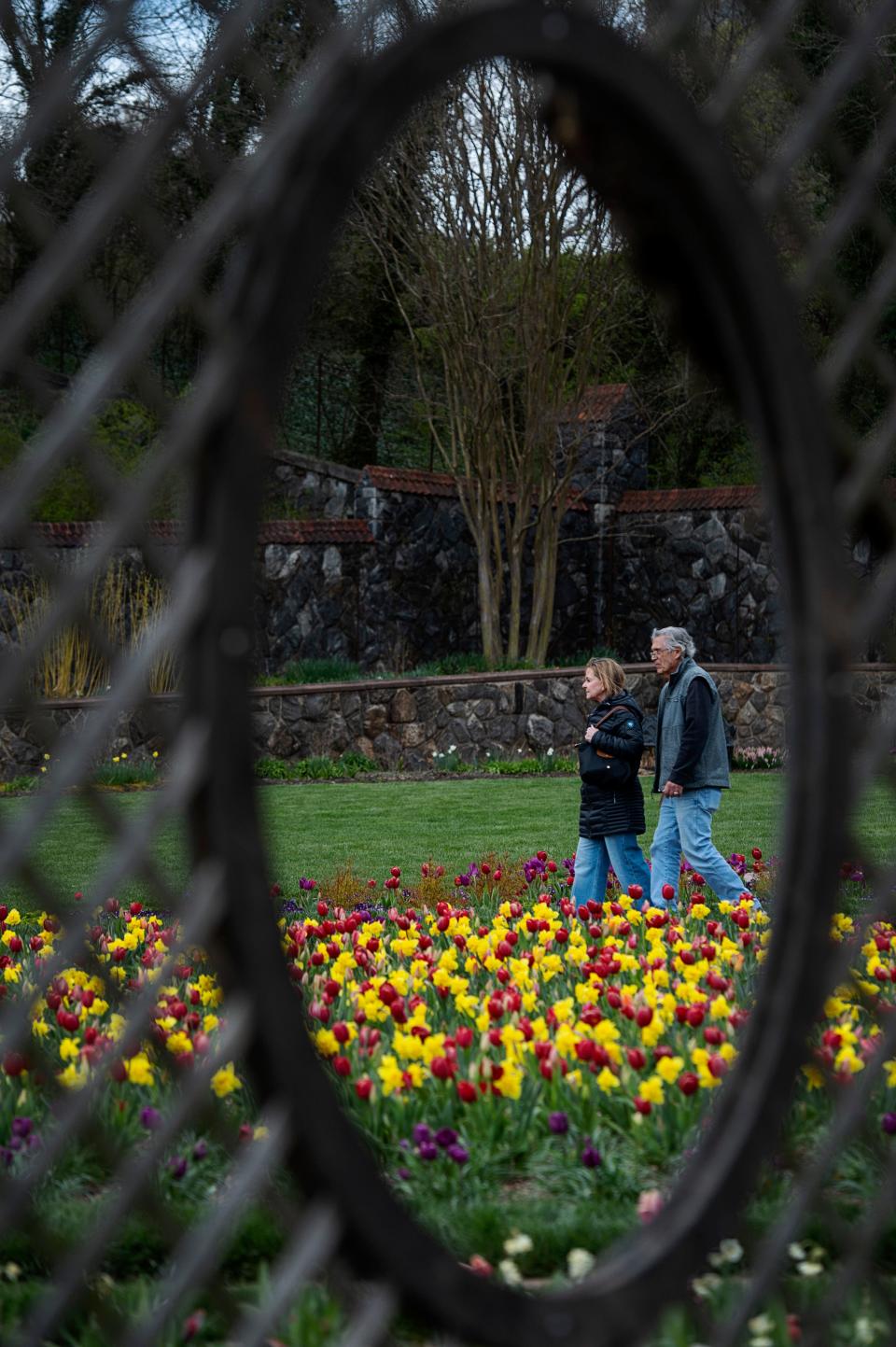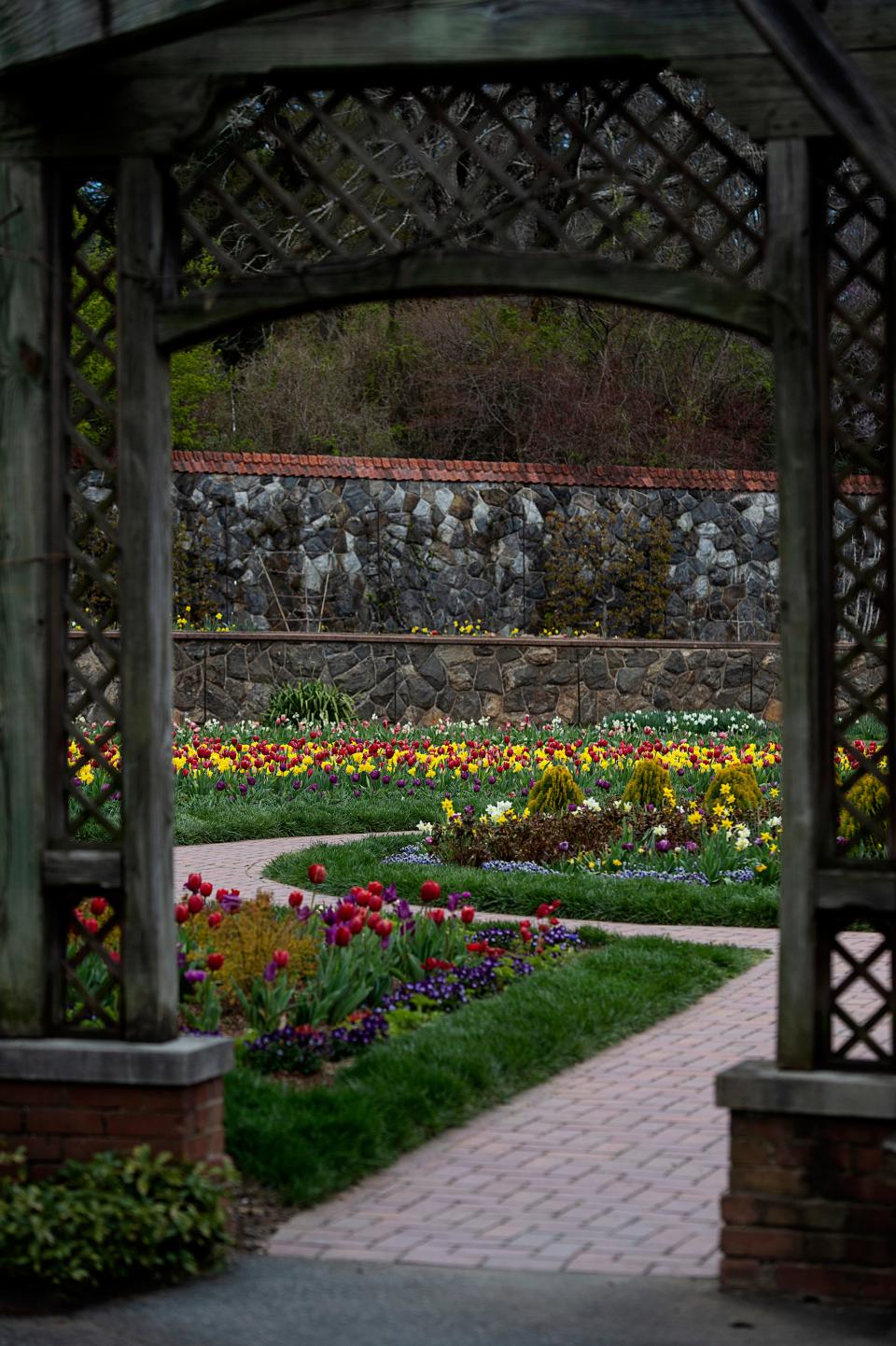Answer Woman: What does Biltmore do with its tulip bulbs? Can the public get some?
ASHEVILLE - Today's burning question is about flowers at Biltmore, and whether people in the community can access the estate's tulip bulbs after blooming season. Got a question for Answer Man or Answer Woman? Email Executive Editor Karen Chávez at KChavez@citizentimes.com and your question could appear in an upcoming column.
Question: What do the Biltmore gardeners do with all the tulip bulbs at the end of the blooming season? Are they left in the ground, removed and stored, or distributed to the public?
Answer: In April, The Biltmore Estate of Asheville’s famous gardens boast thousands of tulips among their colorful variety of award-winning blooms. During their blooming season, April 1 through May 25, guests have the chance to visit and immerse themselves in the vibrant world of the Biltmore gardens.
More: Asheville has one of the top places in the world to visit in the spring: report
More: Asheville is one of the best places in the world to visit in spring, US News reports
The Biltmore’s collection of spring flowers, a beloved staple of the “Biltmore Blooms” season, consists of thousands of daffodils, crocuses, and their carefully cultivated heirloom tulips. LeeAnn Donnelly, senior public relations manager for the Biltmore Estate, said that tulips are planted in November to bloom in March and April.

So, what happens to the bulbs after the tulips are finished blooming?
Unfortunately for hopeful readers, the gardens do not offer opportunities for people to get their hands on bulbs for replanting after the season ends. In fact, they don’t leave them in the ground or remove and store them, either.
More: Biltmore death: Labor department investigates tree-fall accident; report names victim
According to Donnelly, tulips are pulled after blooming season and processed into compost to be used in other areas in the estate gardens. The grounds are made up of 8,000 acres including nine individual gardens, creating a need for fertilizer and planting soil that is partially filled by this repurposed organic material.
Although the tulips are not available to the public after blooming season, hopeful gardeners yearning for a chance to experience the Biltmore’s collection have a few other options. Entry to the grounds can be purchased separately from admission to the estate for flower admirers hoping to view the collection in person, with prices ranging from $65 to $85 depending on the date. These tickets allow visitors to explore the grounds including the gardens and the Antler Hill Village and Winery. Depending on availability, tickets to the Biltmore grounds may also include complementary wine tastings.

The nine gardens and some of their main offerings that guests can take in during their visit to the grounds include:
Library and South Terraces – Wisteria and trumpet vines.
Italian Garden – Victorian lilies, water lilies, lotus and papyrus.
Shrub Garden – Golden rain trees and river birch, along with over 500 plants, shrubs and trees.
Spring Garden – Wide variety of spring blooming shrubs including forsythia, spirea, deutzia and mock orange.
Walled Garden – Thousands of tulips, summer annuals, mums.
Historic Rose Garden – More than 200 varieties of heirloom roses.
Conservatory – Exotic orchids, ferns, and palms.
Azalea Garden – Contains one of the United States’ largest selections of native azaleas, evergreen China fir trees, Katsura trees.
More: Asheville hotel, restaurant receive Forbes Travel Guide's 2023 Star Award
More: On the set of Hallmark's 'A Biltmore Christmas,' filming at Biltmore Estate
The Biltmore’s collection of flowering plants is widely varied, meaning that certain blooms will only be viewable during specific periods of time. Potential visitors can check the gardens’ bloom report page to see which flowers are currently in bloom if they’re hoping to see specific displays during their trip to the Biltmore.
An option for those with their hearts set on bringing home a piece of the Biltmore Gardens is a visit to A Gardener’s Place, one of many shops at the Biltmore Estate. Located beneath the conservatory and open from 10 a.m.-6 p.m. daily, the store advertises the sale of plants, books and garden accessories. Plants available for purchase include azaleas, clethra, day lilies, ferns, hostas, lenten roses and hibiscus. These plants are provided by a wide range of greenhouses not associated directly with the Biltmore Gardens.
However, A Gardener’s Place also offers visitors the opportunity to purchase plants cultivated by the Biltmore team. While tulip bulbs are not available to the public, the store does offer a few plant varieties cultivated by Biltmore growers:
Chenille plants, offered in the summer months.
Abutilon or “flowering maple” plants in two different heirloom varieties developed by Biltmore gardeners: the “Biltmore Bell” and the “Biltmore Ballgown.”
This article originally appeared on Asheville Citizen Times: Answer Woman: What does Biltmore do with tulip bulbs? Give to public?

